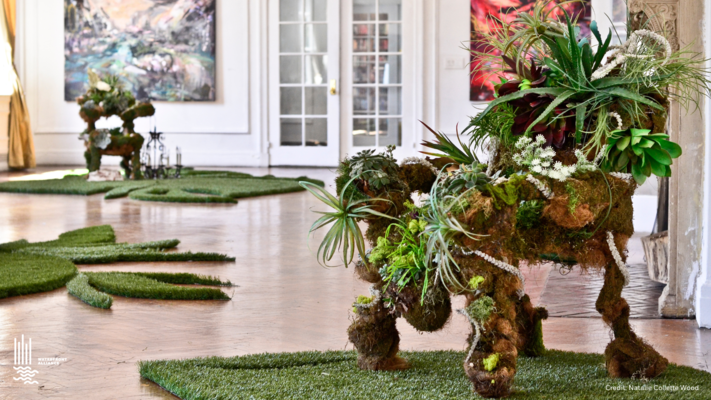For the fourth year, Waterfront Alliance harnesses the power of the creative arts to call attention to the dangers of sea level rise and the urgent need for greater coastal resilience. Join us for a free outdoor art exhibit, Art at the Edge, in the Seaport (Pier 16/South Street Seaport Museum). This exhibit captures New York and New Jersey artists whose work is thematically tied to climate change and will inspire, inform, and engage the public about the urgency of the climate crisis.
Visitors will have the opportunity to absorb art focused on the climate crisis, including the intersecting themes of coastal resilience, waterfront access, and the region’s maritime culture and history. Art at the Edge was launched in 2020, and features the work of local artists for a multi-week period each year. The program is generously supported by The Howard Hughes Corporation and the South Street Seaport Museum. About Waterfront Alliance Waterfront Alliance is a U.S. based nonprofit organization with a growing coalition of more than 1,100 partners with the shared goal to bring about real change to shorelines, waterfronts, and coastlines across the Nation and in the New York-New Jersey region. Together, we build, transform, revitalize, and protect accessible waterfronts for all communities.
The 2023 Art at the Edge Exhibit Natalie Collette Wood "Oyster Party" Oyster Party by Natalie Collette Wood is an outdoor assemblage sculpture uniting natural and found objects, prominently featuring oyster shells. Symbolizing the intricacy and significance of these creatures, the work urges recognition of their essential role in sustaining our planet. It evokes their resilience to reclaim the seascape and calls attention to nature's capacity to replace us if we neglect our responsibilities. Inspired by her "Swallowed By Nature" series, the sculpture reimagines our relationship with waste and the environment, intertwining oyster shells and salt-water bivalve mollusks with discarded domestic items. "Oyster Party" embodies the oysters' powerful impact as natural filters and reflects on New York City's historical connection to them, standing as a symbol of ecological rebirth. Nicole Vergalla “Gowanus Dredgers” Nicole Vergalla’s photographs are part of her “Gowanus Dredgers” collection—shot in and around the Gowanus Canal in Brooklyn.
She writes, “I began to take photographs of the Gowanus Dredgers Canoe Club in 2017 after coming across their annual fundraising race. My wanderings in the city began to focus more and more on the canal and its surrounding areas. I was fascinated by the dual essence of the Gowanus—a Superfund site, with a history marked by neglect and abuse, entwined with recreation, wildlife and joy. As I got more involved with the Dredgers I came to love and really embrace their mission to get the public active and engaged in our local waterways. When people see the City from the water, it changes their perspective. They notice wild pockets at dead end streets, they see how sewer overflows impact the quality of the water, they observe wildlife surviving and even thriving in surprising places. I believe that by encouraging people to actively engage with our waterfront, we create future stewards and advocates for the ecosystem we all share.” Jeremy Dennis On This Site: Indigenous Landscapes Throughout Long Island 2016 – Present An art-based research project by Shinnecock Nation tribe member and artist Jeremy Dennis.
Jeremy Dennis’s goal is to preserve and create awareness of sacred, culturally significant, and historical Native American landscapes on Long Island, New York. Through curiosity about his own origin and ancestral history, Dennis gathers and combines archaeological, anthropological, historical, and oral stories to answer essential cultural defining questions: Where did my ancestors live? Why did they choose these places? What happened to them over time? Do these places still exist? To seek the answers to his questions, Dennis researches, visits, and photographs each site, documenting the change in each landscape and highlighting the everlasting connection between place and memory. As a revelation, these sites remain but were made invisible.
